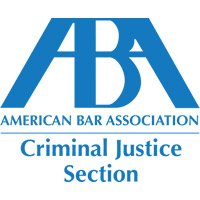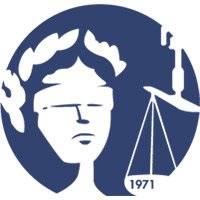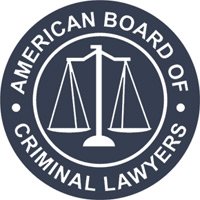PRETRIAL PUBLICITY
Some Circuits have held that where panel members have been exposed to pretrial publicity the court must ascertain what in particular each juror has heard or read, how it effects their attitude toward the trial, and regardless of response, to make an independent determination as to their fairness.
Silverthorne v. US, 400 F.2d 627 (9th Cir. 1968);
US v. Dillinger, 477 F.2d 340 (7th Cir.), cert. denied, 410 US 970 (1973);
US v. Davis, 583 F.2d 190 (5th Cir. 1978);
US v. Chagra, 669 F.2d 241 (5th Cir. 1982).
However, the Supreme Court recently held that a defendant cannot compel the judge to inquire of each venire member concerning the contents and extent of publicity to which he or she has been exposed. Mu’min v. Virginia, 500 U.S. 415, 111 S.Ct. 1899, 114
L.Ed.2d 493 (1991).
If jurors potentially have been exposed to prejudicial publicity, the court should make an inquiry to determine the existence of actual exposure.
See U.S. v. Gray, 788 F.2d 1031, 1033 (4th Cir. 1986) (reversible error because court failed to inquire whether jurors were
actually exposed to newspaper articles highly prejudicial to defendant.)
U.S. v. Becker, 69 F.3d 1290, 1293 (5th Cir. 1995) (reversible error when court failed to conduct adequate voir dire regarding jurors’ exposure to pretrial publicity because court’s inquiry insufficient to discover potential juror bias.)
U.S. v. Thompson, 908 F.2d 648, 649-50 (10th Cir. 1990)
(reversible error because court failed to conduct voir dire and ask jurors, some of whom had been observed reading newspaper, whether they read highly prejudicial news article concerning inadmissible withdrawn guilty plea by defendant.)
When there exists a “reasonable likelihood that prejudicial news prior to trial will prevent a fair trial,” the judge should grant a continuance until the threat abates or allow a change of venue to another area where publicity about the case is less pervasive.
See Spivey v. Head, 207 F.3d 207 1263, 1270-71 (11th Cir. 2000) (no error in denying motion for change of venue despite extensive media coverage because pretrial publicity was not inflammatory and did not saturate the community)
Rule 21 of the Federal Rules of Criminal Procedure governs the transfer of criminal cases due to extensive publicity. FED. R. CRIM. P. 21(a). Under Rule 21, upon the motion of the defendant, the court shall transfer the proceeding to another district if the court is satisfied that there exists in the district where the prosecution is pending so great a prejudice against the defendant that the defendant cannot obtain fair and impartial trial in that district.
In Patton v. Yount, 467 U.S. 1025, 104 S.Ct. 2885, 81 L.Ed.2d 847 (1984), the
Supreme Court noted that the question the trial court must consider is not whether the publicity has caused jurors within the community to recall a particular case, but whether the publicity has given jurors such fired opinions that they cannot judge the defendant’s guilt impartially. Patton v. Yount, 467 U.S. at 2891.
See US v. Kelly, 722 F.2d 873 (1st Cir. 1983), cert. denied, 104 S.Ct. 1425 (1984) (suggesting its absurd to assert that each juror’s mind be a “tabula rasa”);
US v. Wilson, 715 F.2d 1164 (7th Cir.), cert. denied, 104 S.Ct.
434 (1983) (noting jury’s mere familiarity with articles discussing narcotics ring does not establish prejudice);
US v. Manzella, 782 F.2d 533, 543-544 (5th Cir. 1986) (noting one paragraph in a medium length newspaper article published during trial, referring to defendant’s prior conviction did not warrant reversal as to defendant or co-defendants).
Preferably out of the hearing and presence of the other members of the panel.
US v. Tropiano, 418 F.2d 1069, 1079-80 (2d Cir. 1969), cert.
denied, 397 US 1021 (1970);
Silverthorne v. US, 400 F.2d 627 (9th Cir. 1968);
Patriarca v. US, 402 F.2d 314, 318 (1st Cir. 1968), cert. denied,
393 US 1022 (1969);
US v. Chagra, 669 F.2d 241 (5th Cir. 1982).
“…An appellant can establish both that pretrial publicity about his case raised “a significant possibility of prejudice, US v. Davis, 583 F.2d 190, 196 (5th Cir. 1978); and that the voir dire procedure followed by the district court in his case failed to provide a “‘reasonable assurance that prejudice would be discovered if present.'” US v. Hawkins, 658 F.2d 279 (5th Cir. 1981).
“The district court erred in not undertaking a more thorough examination of those panel members exposed to publicity. Under the circumstances of this case, where the nature of the publicity as a whole raised a significant possibility of prejudice, the …court should have determined what in particular each juror had heard or read and how it affected his attitude toward the trial, and should have determined for itself whether any juror’s impartiality had been destroyed. The ABA Standards Relating to Fair Trial and Free Press recommend that the district court examine each juror individually and out of the presence of other jurors to determine what he heard or read and
how it has affected his attitude towards the trial.” US v. Davis,
583 F.2d 190, 196 (5th Cir. 1978).
“The drug related nature of the charges against appellants commanded prominence in the vast majority of the local coverage, as did the government’s allegation of a large, ongoing conspiracy involving over twenty individuals. Several of the articles referred to the racketeering and criminal enterprise charges… The clear teaching of Davis is that when a significant possibility exists that a juror will be ineligible to serve because of potentially prejudicial publicity, it is the obligation of the district court to determine whether that juror can lay aside any impression or opinion due to the exposure. Of course, this does not mean that every case involving exposure to pretrial publicity automatically requires the “time consuming, probing, preferably individual voir dire described in Davis,” United States v. Gerald, 624 F.2d at 1298; nor does it mean that such an examination, when necessary, must always be conducted apart from the other jurors. As in Davis, “[w]e recognize the district court’s need for flexibility in interrogating jurors as to possible prejudice.” US v. Davis, 583 F.2d at 197. What it does mean, however, is that when the nature of the publicity as a whole raises a significant possibility of prejudice, and a juror acknowledges some exposure to that publicity, more than the abbreviated questioning conducted in Davis and in the case sub judice is necessary: “The juror is poorly placed to make a determination as to his own impartiality. Instead, the trial court should make this determination.” US v. Hawkins, 658 F.2d 279, 284-85 (5th
Cir. 1981).
See also Jordan v. Lippman, 763 F.2d 1265 (11th Cir. 1985) (holding trial court’s failure to conduct voir dire or to allow defense counsel to make inquiries of jury panel members when viewed in context of “barrage of inflammatory publicity”, violated defendant’s constitutional rights to an impartial jury and due process).
In US v. Witt, 718 F.2d 1494 (10th Cir. 1983), the Tenth Circuit held that where the trial court deems individual questioning of venire men during voir dire to be unnecessary to ensure a fair trial it may question the entire panel provided the court ensures impartiality.
To establish such juror partiality, the defendant must show that the publicity either prejudiced an individual juror or caused pervasive hostility in the community. Murphy v. Florida, 421 US 794, 95 S. Ct. 2031, 44 L.Ed.2d 589 (1975).
See Atwell v. Blackburn, 800 F.2d 502, 507 (5th Cir. 1986) (noting defendant failed to make prima facie showing that practice of not serving summons in a particular housing project affected the impartiality of his grand jury venire, and therefore all relief sought was denied).
The Eighth Circuit has specified procedures for determining whether trial publicity has deprived a defendant of a fair trial. US v. Burchinal, 657 F.2d 985 (8th Cir.), cert. denied, 454 US 1086 (1981).
A court must first examine the publicity potential for prejudicing jurors. US v. Burchinal, 657 F.2d 985 (8th Cir.), cert. denied, 454 US 1086 (1981). See also US v. O’Keefe, 722 F.2d 1175 (5th Cir. 1983) (holding prejudice may be shown by evidence that extrinsic matter tainted deliberation). If a danger of prejudice exists, the court should question the jurors to determine if they have been exposed to the publicity and if so to gauge its effect. Finally, the court must decide what measures are necessary to protect the accused.
US v. Burchinal, 657 F.2d 985 (8th Cir.), cert. denied, 454 US 1086 (1981);
US v. O’Keefe, 722 F.2d 1175 (5th Cir. 1983);
US v. Spawr Optical Research Inc., 685 F.2d 1076 (9th Cir. 1982), cert. denied, 461 US 905 (1983).
However, the Supreme Court in Nebraska Press Association v. Stuart, 427 US 539 (1976), held there is a strong presumption against use of prior restraints to prevent publicity before and during trials. There is a presumption against use of prior restraints on the media and the defendant bears “the heavy burden of demonstrating in advance of trial that without prior restraint a fair trial will be denied”. Nebraska Press Association v. Stuart, 427 US 539, 569 (1976).











